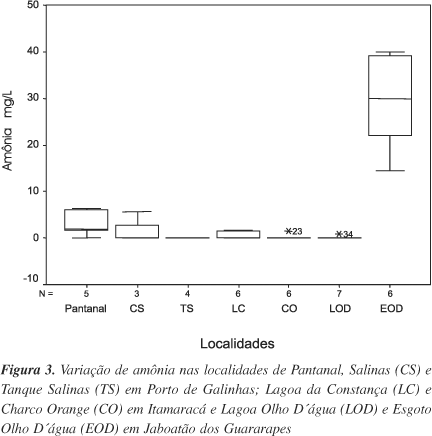This study analyzes the physico-chemical and biological parameters of freshwater aquatic environments in coastal areas of the State of Pernambuco, Brazil, where snail vector foci and cases of schistosomiasis have been recorded. The tests were carried out using standard methods and sediments were analyzed using the X-ray fluorescence technique. The micro-algae were analyzed using conventional microscopy. The most abundant chemical elements in the sediments were Fe, Ca, Si and Al and there were high concentrations of electrolytes in comparison with data published in the literature. The mean values for salinity (7.7 g/L) and sulfate (489 mg/L) were much higher than normal for freshwater environments. The micro-algae identified are those that inhabit environments with higher levels of salinity. The snail Biomphalaria glabrata seems, therefore, to be more tolerant to salty environments and this constitutes a risk of spread of schistosomiasis.
Biomphalaria glabrata; salinity; aquatic environments





